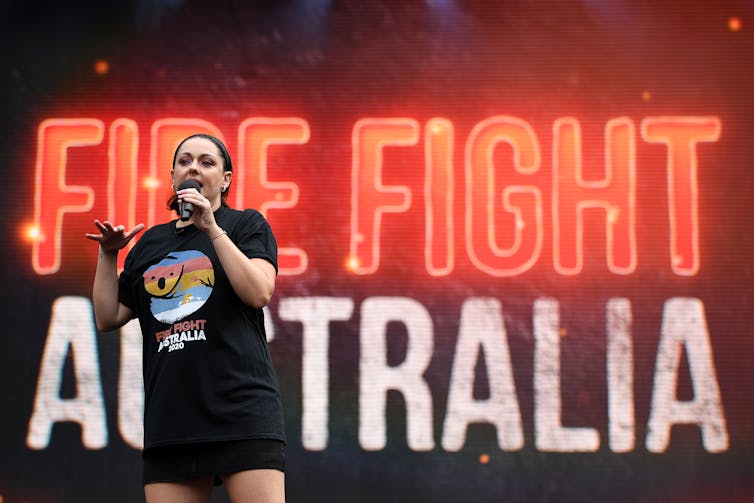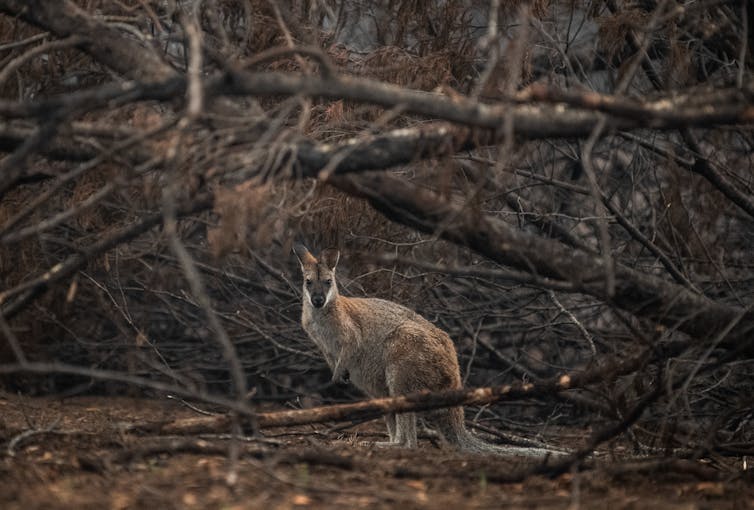Celeste Barber's story shows us the power of celebrity fundraising ... and the importance of reading the fine print
- Written by Krystian Seibert, Industry Fellow, Centre for Social Impact, Swinburne University of Technology
Comedian Celeste Barber’s whopping $51 million bushfire fundraiser showed us just how generous people can be in times of trouble.
But the need to seek the NSW Supreme Court’s advice about how to spend the funds also demonstrates how tricky things can become when large amounts of money are involved.
As someone who researches the regulation of philanthropy and the not-for-profit sector, the episode is both a lesson in reading the fine print and the need for simpler donations laws.
But it should not deter public-spirited celebrities from fundraising in the future.
Celeste Barber’s big fundraising win
The summer bushfires saw an outpouring of generosity, with Australians donating vast sums towards various charities and causes.
Barber has family on the NSW South Coast, which was badly hit by the fires. The well-known comedian responded by setting up a Facebook fundraiser.
 Comedian Celeste Barber raised more than $51 million through her fundraising campaign.
Joel Carrett/AAP
Comedian Celeste Barber raised more than $51 million through her fundraising campaign.
Joel Carrett/AAP
The beneficiary was the Trustee for NSW Rural Fire Service (RFS) and Brigades Donation Fund and the target was to raise $30,000.
The fundraiser went viral and saw millions of dollars pour in from around the world. As donations skyrocketed, Barber told her fans via Instagram she planned to spread the money raised around:
I’m going to make sure that Victoria gets some, that South Australia gets some, also families of people who have died in these fires, the wildlife.
Ultimately, Barber raised more than $51 million from about 1.3 million donors. Facebook’s fundraising partner, PayPal Giving Fund, then passed the money on to the NSW RFS donation fund.
The $51 million question
But spending the money was not straightforward.
The RFS donation fund is governed by a “trust deed,” which limits what it can use donations for. This means it can only spend funds received on equipment, training and resources or administrative costs for RFS brigades.
It does not allow donations to be passed on to fire services in other states or to other charities.
Given Barber’s comments about how the donations should be distributed and the intense attention on the issue, the RFS sought the advice of the NSW Supreme Court.
The NSW Supreme Court’s advice
On Monday, the court handed down its decision, and depending on your perspective, it’s a mix of good and bad news.
On the one hand, the court confirmed that donations can’t be passed on to fire services in other states or to other charities.
 The funds raised can’t be passed on to other charities.
James Gourley/AAP
The funds raised can’t be passed on to other charities.
James Gourley/AAP
But it found funds can be spent to support rural firefighters injured while firefighting and the families of rural firefighters killed while firefighting. The funds can also be spent on physical and mental health training, as well as trauma counselling.
Where to from here?
The effect of the court’s decision is that the funds will stay with the RFS, where they will no doubt be used for important purposes.
But the decision may disappoint some donors, who thought the money would be able to be used to help the broader response to the bushfires. That includes supporting relief and rebuilding efforts in communities devastated by the fires, or helping injured wildlife.
Read more: Celebrity charities just compete with all other charities – so why start one?
The decision did flag that individual donors could bring their own court case if they believed the funds they donated where not being used for the purposes they were donated for. But this is unlikely - if you’ve donated $25, then you may not want to spend lots of time and expense pursuing a court case.
The NSW Parliament could pass legislation to broaden the purposes for which the donation fund can spend donations. And NSW Greens MP David Shoebridge has proposed a bill to do just that.
But NSW’s Coalition government is unlikely to back a Greens-sponsored bill.
What lessons can we lean?
The main lesson is that if you’re setting up a fundraiser, or looking to donate to a particular charity, do some due diligence first.
For example, the national charities regulator, the Australian Charities and Not-for-profits Commission has a free public register where you can look up information about individual charities.
To be fair to Barber, she did only intend to raise $30,000 for the RFS, and only expressed a desire to broaden the beneficiaries of her fundraiser when it took off.
Read more: After the bushfires, we helped choose the animals and plants in most need. Here's how we did it
But it’s important to read the fine print and to understand what you can and can’t do as part of a fundraiser.
The episode also shows us that the laws governing charities and philanthropy in Australia are complex.
If the federal government introduced simpler laws to regulate “deductible gift recipients” (organisations that can receive tax deductible donations), then it’s likely the problem with Barber’s fundraising would have been easier to resolve.
This is because the activities of organisations wouldn’t need to as tightly confined as they are currently required to be.
We don’t need to leave fundraising to the professionals
In a short statement on Monday, Barber noted: “turns out that studying acting at university does not make me a lawmaker”.
Some people may think the court’s involvement means we should leave fundraising to the professionals, and that celebrity fundraisers do more harm than good. I disagree.
One of the powerful aspects of philanthropy is that anybody can see an area of need, donate money and rally others to do so.
Read more: As fires rage, we must use social media for long-term change, not just short-term fundraising
That is something we should encourage. Whilst it’s important to do due diligence, celebrities can play an important role by using their platform to promote giving.
Barber’s bushfire fundraiser was a powerful example of this, and we shouldn’t let the legal issues detract from it.
Authors: Krystian Seibert, Industry Fellow, Centre for Social Impact, Swinburne University of Technology



